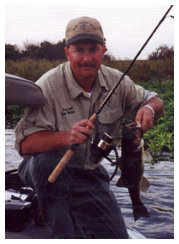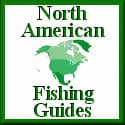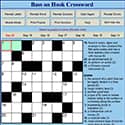Bass on Hook is Supported by our readers.
As an Amazon Associate We earn commissions from qualifying purchases with no extra cost to you.
For more informtion read our Amazon Affiliate Disclosure and Affiliate Disclosure Policies.
Pro Staff Question - What Is The Best Slow Retrieve Technic For Catching Bass
Dennis "The Fishin Professor" Bryant's Answer

SLOW? Have you ever watched grass grow?
Or watch paint dry?
Or waited for an income-tax refund check to finally hit your mailbox?
THAT is SLOW!
But what is considered a slow retrieval speed for catching bass?
Let me see if I can explain it for you.
Slow Retrieval Rates For Crankbaits, Jigs And Spinnerbaits
A long time ago, I used to think that a slow retrieve on a spinnerbait, was about a one foot per second retrieve rate.
Well in today's common terms, THAT was almost a lightning speed retrieve.
A slow retrieve on a spinnerbait is only fast enough to make the blade(s) turn and maintain a given depth.
A slow retrieve on a top-water lure means that you allow the lure time to recover (basically allow time for all the ripples to leave the area) before the lure is moved again.
A slow retrieve on a crank-bait is only fast enough to allow the lure to maintain it's depth without causing an exagerated motion.
A slow retrieve on a jig can take you ten minutes to cover ten feet of structure, if you hurry it a bit!
I'm sure you've got the idea by now!
Have Patience When Fishing Finesse Baits
HAVE PATIENCE! TAKE YOUR TIME! ALLOW THE FISH TIME TO SEE THE BAIT!
Working a finesse-bait of ANY KIND, requires a slow retrieve like those I've noted above.
There are times that it takes a slow retrieve to catch fish.
And there are times that only a fast retrieve will work.
I'm afraid that there are no shortcuts on learning when to put either to use.
Only time and experience work there.
And then, out of the clear blue sky, something new will come along and change everything that you think you've ever learned!
Have fun with the sport!
Enjoy your time on the water!
Learn one new fishing technique from every person that you fish with!
And, someday we'll be reading your column!
Good Fishin'!
Dennis Bryant
The Fishin' Professor!
Charles "The Bass Doctor" Stuart's Answer

You say that you understand equipment so I will not go into reel retrieval speeds other than to say that depending upon your lure of choice, the reel must match the situation.
One fairly quick turn of a handle is the manufacturers recommended rate of line retrieval.
Your own ability to slow down or speed up is a personal choice based on location, water depth, clarity, time of day, light penetration and the fishes own aggressive or passive nature.
The following reel retrieval rates are my recommendations for some of the lures I use frequently.
Slow Retrieval Rates For Lipped Crankbaits
As an example, a lipped crankbait should be run on a lower gear ration reel i.e. 5:1 to 1 or 5:3 to 1.
I will sometimes go as slow as a 4:5 to 1 gear ratio but if I turn the reel handle a little quicker than normal, I will not change the line to spool ratio, but I will retrieve the lure a little faster and change the action of the lure.
The other example would be a lipless crankbait that needs a 6:3 to 1 or 6:5 to 1 in order to run correctly.
I can "stall" lipless bait by slowing down the rate at which I turn the handle.
This slowing down will make the lure flutter and dip during the retrieve.
In low light or muddy conditions, a bass may target that lure because it seems "lost" and is faltering.
Tight Lines!
Charles "The Bass Doctor" Stuart
BassonHook Pro Staff
Leo Watson's Answer

A slow retrieve is a relative term.
Slow can have a different meaning to different people.
When I talk about slow rolling a spinnerbait I mean reeling in the lure just fast enough to have the blades turn.
When people talk about a slow retrieve most consider slow just slower than what your normal retrieve would be.
You Have To Let The Fish Tell You What Retrieve They Want
This can be determined by they way the fish is hooked and the hook location within the mouth.
If you are catching fish is the side of their face or just in the bottom lip this telling you you are on the right track but, something is just a little off.
This could be the retrieve speed, color selection, lure size etc.
Ideally you want the entire bait to be in the bass' mouth and with them hooked in the upper part of their head.
This is the most bony part and very few fish are lost when hooked there.
One thing to remember about a slow retrieve is that you should bring the lure in what I would call painfully slow.
This means so slow you can hardly stand it!
To me this is a slow retrieve.
Thank you,
Leo Watson










